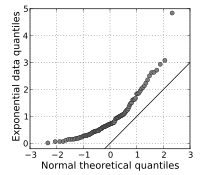
Photo from wikipedia
On the basis of the microscopic quasi-classical Eilenberger theory, we analyze the recent angle-resolved specific heat experiment carried out at low temperature for Sr$_2$RuO$_{4}$ to identify the superconducting gap symmetry,… Click to show full abstract
On the basis of the microscopic quasi-classical Eilenberger theory, we analyze the recent angle-resolved specific heat experiment carried out at low temperature for Sr$_2$RuO$_{4}$ to identify the superconducting gap symmetry, comprising either horizontal or vertical line nodes relative to the tetragonal crystal symmetry. Several characteristics, in particular, the landscape of the in-plane oscillation amplitude $A_4(B, T)$ with a definite sign for almost the entire $B$-$T$ plane are best explained by the horizontal line node symmetry, especially when the multiband effect and Pauli paramagnetic effect are taken into account. The present analysis of $A_4(B,T)$ with definite sign points to the presence of an anomalous field region at a lower temperature in the experimental data, whose origin is investigated. Our theory demonstrates the application and uniqueness of the field-rotating thermodynamic measurements in uncovering the precise gap structure for target materials.
Journal Title: Physical Review B
Year Published: 2019
Link to full text (if available)
Share on Social Media: Sign Up to like & get
recommendations!